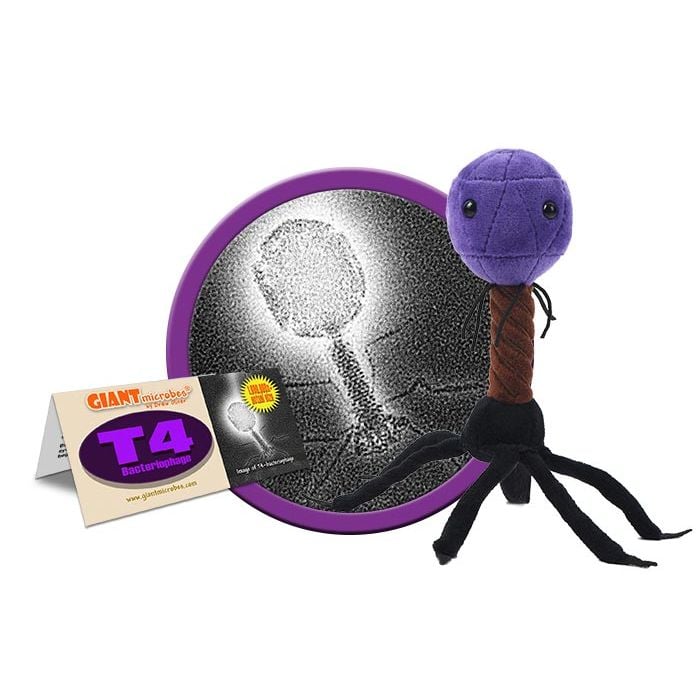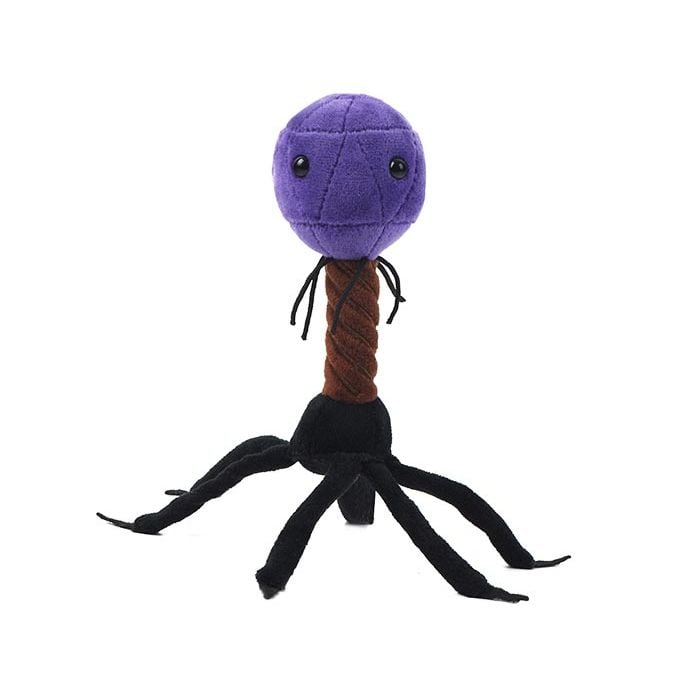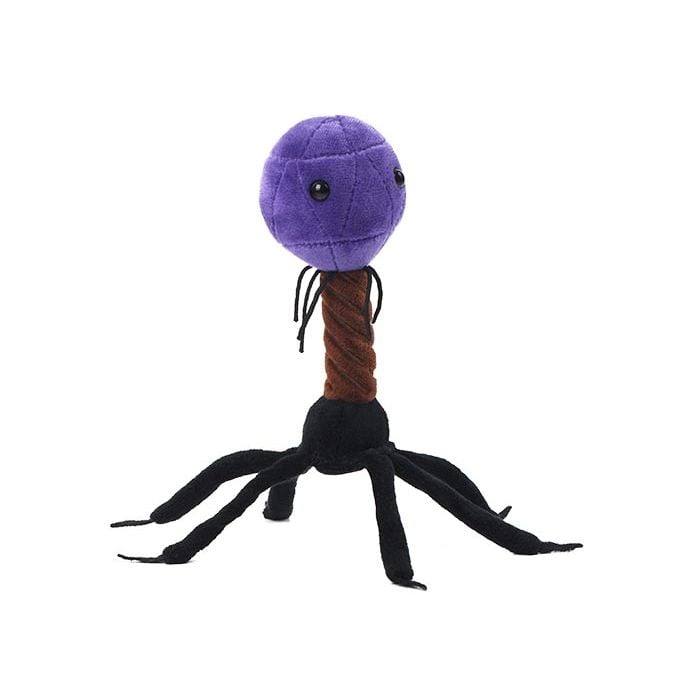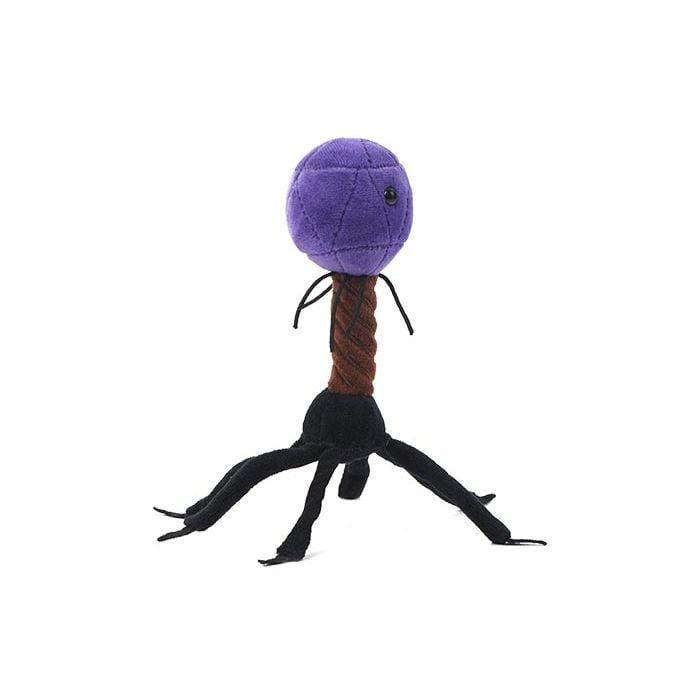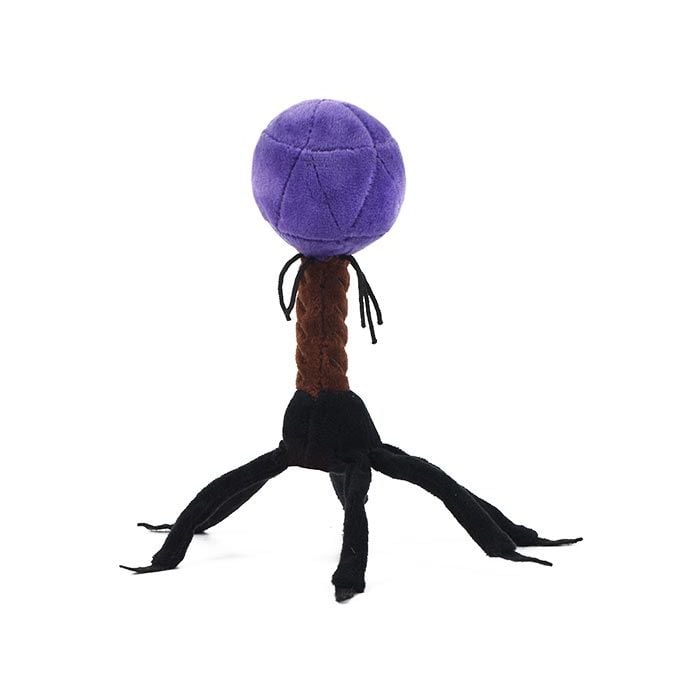T4 (T4-Bacteriophage)
£13.95
T4-Bacteriophage may look like something out of a science fiction movie, but if you’re an E. coli bacteria, it’s the stuff of your nightmares. This adorable plush representation of T4 provides a fun, hands-on-way to learn about viruses and the wonderful world of microbiology.
A unique, memorable and exciting gift for scientists, educators, students, family and anyone with a healthy sense of humor. Features poseable legs, high quality materials and includes an educational printed card with fascinating facts about this incredible virus.
Size: 23 x 13 x 6cm
Product Details
Additional Information
| Sizes | Giantmicrobes are based on actual microbes, cells, organisms and other critters, only 1,000,000 times actual size! Gigantic (GG) 40-60cm XL (XL) 25-38cm Original (PD) 12-20cm Minis (MM) 5-10cm each Keychain (KC) 5-10cm with clip |
|---|---|
| Materials | Plush from all new materials. Stuffed with polyester fiber fill. Surface washable: sponge with water & soap, air dry. |
| Packaging | Each plush microbe includes a printed card with fun, educational and fascinating facts about the actual microbe or cell. |
| Safety | Every product meets or exceeds U.S. and European standards for safety. For ages 3 and up. |
All about T4 (T4-Bacteriophage)
| Description | They’re being used as an alternative to antibiotics in treating human bacterial infections, in a process called phage therapy. Phage therapy has an advantage over antibiotics because bacteria haven’t developed resistance to it like they have to antibiotics. |
|---|
| Name | Bacteriophage comes from Greek root words to describe the virus’s ability to “eat” bacteria. T4 will terminate its prey with precision! |
|---|
| Actual Size | T4 is about 120 x 86 nanometers. That’s six thousand times smaller than a grain of coffee! |
|---|
| Where It Lives | A bacteriophage is a virus that attacks bacteria. When the tail fibers detect a target host the bacteriophage attaches to the cell, injects its DNA, and uses the bacteria’s machinery to reproduce. The virions, or dormant viruses, become activated when they come in contact with a target cell. T4 is a type of bacteriophage that infects E. coli. |
|---|
| History | Discovered by Frederick Twort in 1915 and Felix d’Herelle in 1917. |
|---|
| Fascinating Facts | Bacteriophages were used to treat bacterial infections, like gangrene and dysentery, during World War II. That’s even earlier than antibiotics! |
|---|







